CRJ’s Autumn 2025 edition is out now!
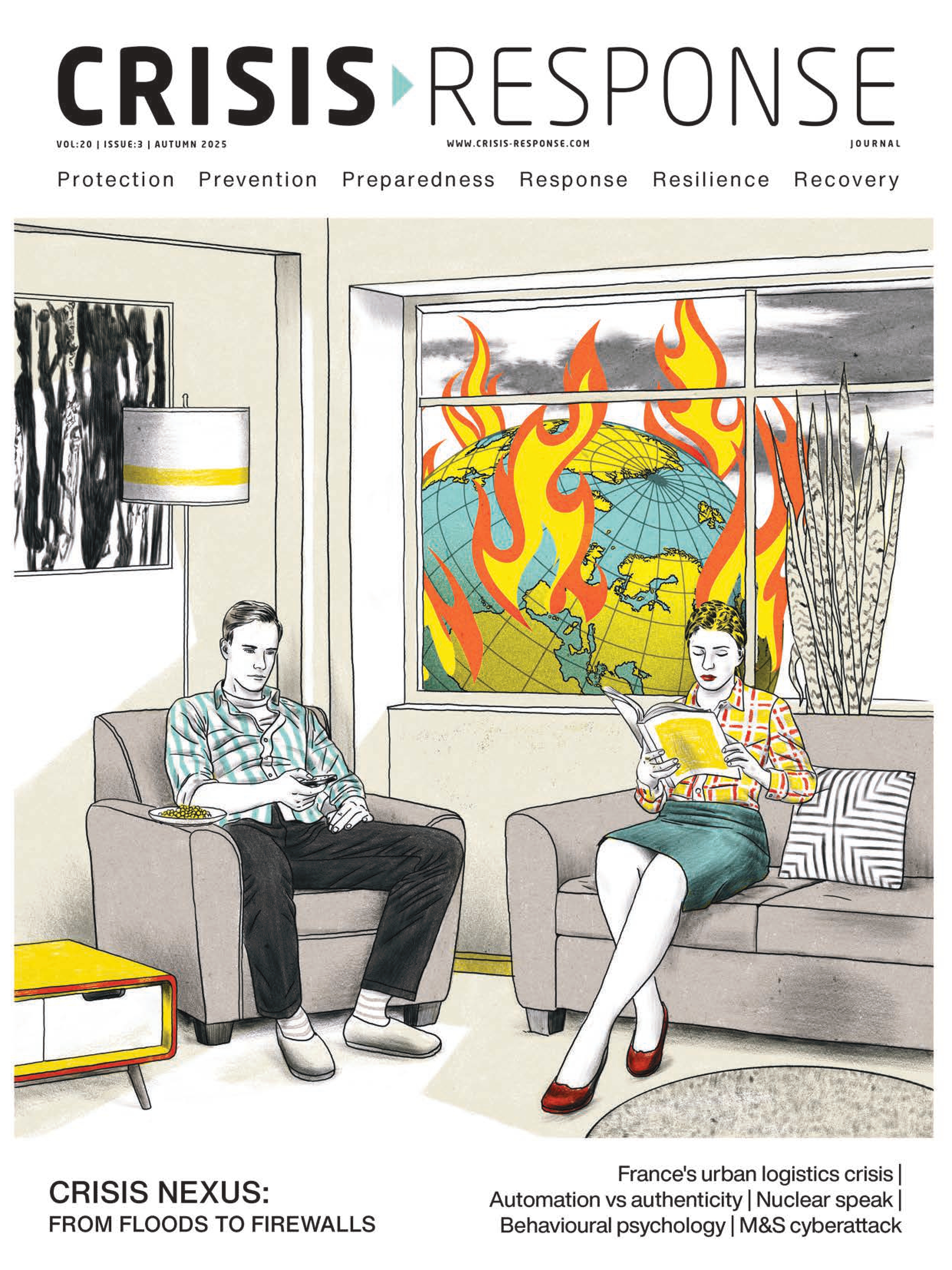 Our Autumn 2025 issue is now live. The digital edition can be accessed on CRJ’s website, whereas CRJ 20:3 hard copies will be mailed out shortly.
Our Autumn 2025 issue is now live. The digital edition can be accessed on CRJ’s website, whereas CRJ 20:3 hard copies will be mailed out shortly.
This edition looks at the crisis nexus, tackling everything from floods and migration to firewalls and cyber resilience. It also explores the rise of intelligent systems in various sectors, such as aviation and emergency communication, as well as the behavioural aspects of response. Furthermore, it addresses a key question: How can global systems respond to ambiguous threats in an age of complex crises?
Comment: Sana Kardar examines how women’s health is systematically deprioritised during crises, citing the National Health Service’s backlog and Pakistan’s response to floods. She writes: “Emergencies will continue to test health systems. The measure of resilience is whether women remain collateral or whether their health is treated as a core, non-negotiable element of the response.”
On the other hand, Tabasom Mahjub analyses the challenges of legitimacy, legality, and distortion in humanitarian interventions.
Onto intelligent systems: Ingo Simonis explores the world’s first AI-powered Discrete Global Grid Systems pilot and its role in eliminating the mapping chaos of spatial data in disaster response, while Stephen Hines notes how automatic external defibrillators must adapt to meet the needs of broader, more diverse audiences. Similarly, Nashin Mahtani highlights her tool, Petabencana.id, a disaster mapping software that utilises both social media and local wisdom.
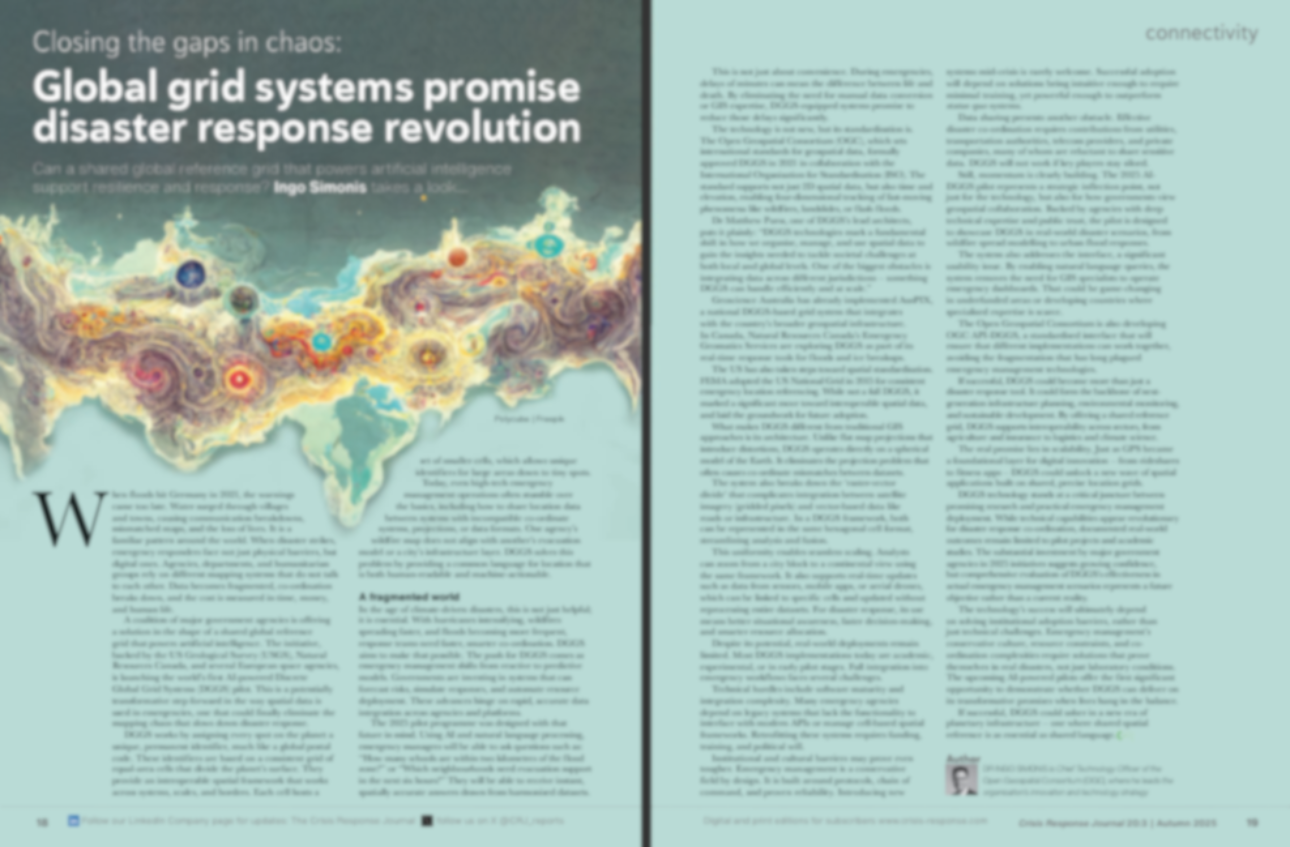
Ingo Simonis asks: Can a shared global reference grid that powers artificial intelligence support resilience and response? (p 18)
Amanda Coleman looks at the risks of AI in communication, urging a shift towards radical authenticity. Meanwhile, Mostafa Sayyadi, Michael J Provitera and Majid Ghazizadeh discuss how executives can tackle the challenges AI is bringing to organisations, while Naveed Kapadia answers the question: How do we ensure that aviation crews remain not only competent but also cognitively resilient in environments increasingly shaped by automation and artificial intelligence?
Complex crises: Gilles Paché addresses the social, environmental, and economic consequences of the urban logistics crisis in France, driven by the explosive growth of e-commerce.
Jeannie Barr analyses the current level of preparedness in the UK. She says: “If the UK is to thrive in a defence-oriented future, we must normalise resilience behaviours, invest in inclusive systems, and foster a culture of shared responsibility. This is not just a government task; it is a societal mission.”
Kunwar Khuldune Shahid examines the growing normalisation and use of nuclear rhetoric by world leaders and how this trend is escalating global tensions. Meanwhile, Zoya Anwer analyses how chronic insecurity, unemployment, conflict, and instability have long pushed youth in Kurram, Pakistan, toward perilous, illegal migration towards Europe.
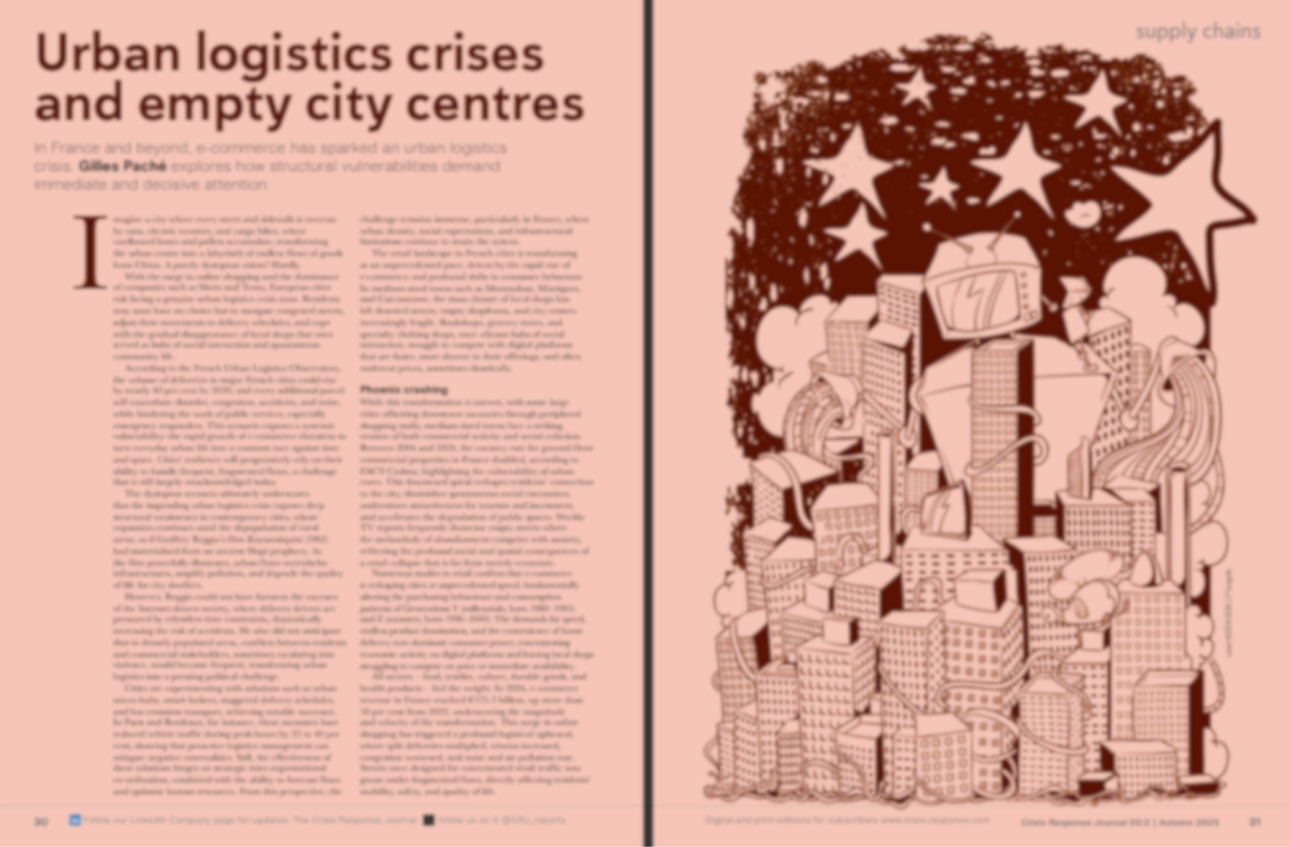
The volume of deliveries in major French cities could rise by nearly 40 per cent by 2030, causing an urban logistics crisis. Gilles Paché takes a look (p 30)
Onto models: Marcus Almeida analyses the failure of conventional decision-making models in the face of polycrisis, urging for an approach based on exponential regenerative decisions, while Chris Needham-Bennett and Iman Chaudhry continue their discussion from CRJ 20:2 on the 5x5 matrix in risk management and offer a new approach.
Meanwhile, Beverley Griffiths examines how employers can support their workforce during crisis events, focusing on emotional wellbeing, communication, ethical leadership, and adaptability.
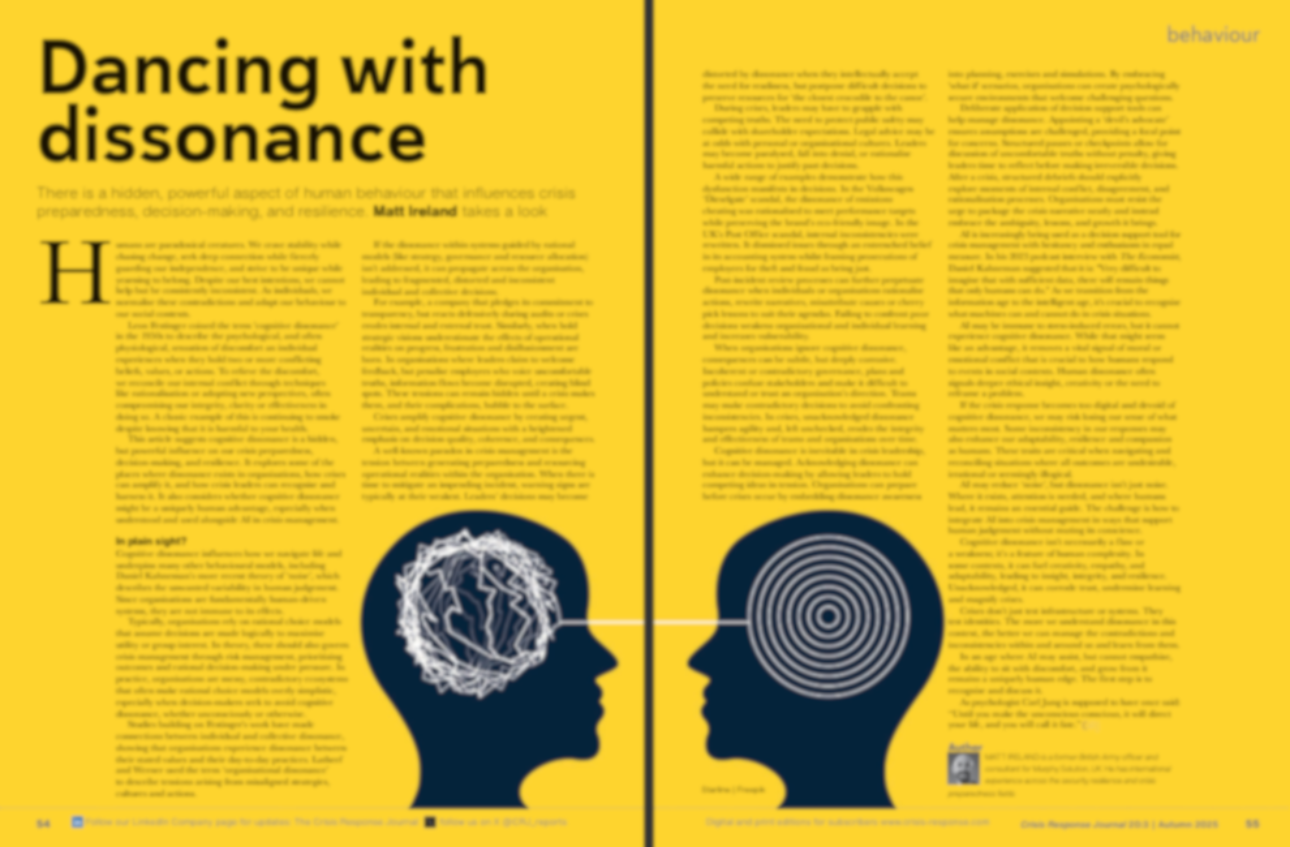
Matt Ireland writes: "Cognitive dissonance isn’t necessarily a flaw or a weakness; it’s a feature of human complexity" (p 55)
Looking at behavioural dimensions, Matt Ireland looks at the influence of cognitive dissonance on crisis preparedness, decision-making, and resilience, while Erik de Soir explores the forms of early psychological support for first responders, examining their pitfalls and benefits.
Onto violence and attacks: Sophia Klewer highlights what an effective response against hybrid warfare looks like for organisations and crisis leaders, and Diana Concannon tackles the emerging issue of vicarious targets in threat assessment and management.
Similarly, Cedrick Moriggi uses the Marks and Spencer cyberattack to highlight how poor business continuity can turn disruptions into full-blown crises. He writes: “What happens when the walls are breached? This is not a story about IT failure; it’s about leadership blind spots. The third little pig did not just build stronger walls; he built a home that could endure. When the storm came, he had warmth, supplies, and structure. It was not strength that saved him; it was design.”
Mostafa Sayyadi, Michael J Provitera and Majid Ghazizadeh look at the importance of conceptual skills and personal development for crisis leaders, urging a shift to democratisation of an organisation and learning about human capital.
This edition also puts a spotlight on shifting systems and evolution. Marcus Coleman reflects on the shortcomings and future direction of global efforts to reduce disaster risk as the Sendai Framework for Disaster Risk Reduction nears its conclusion.
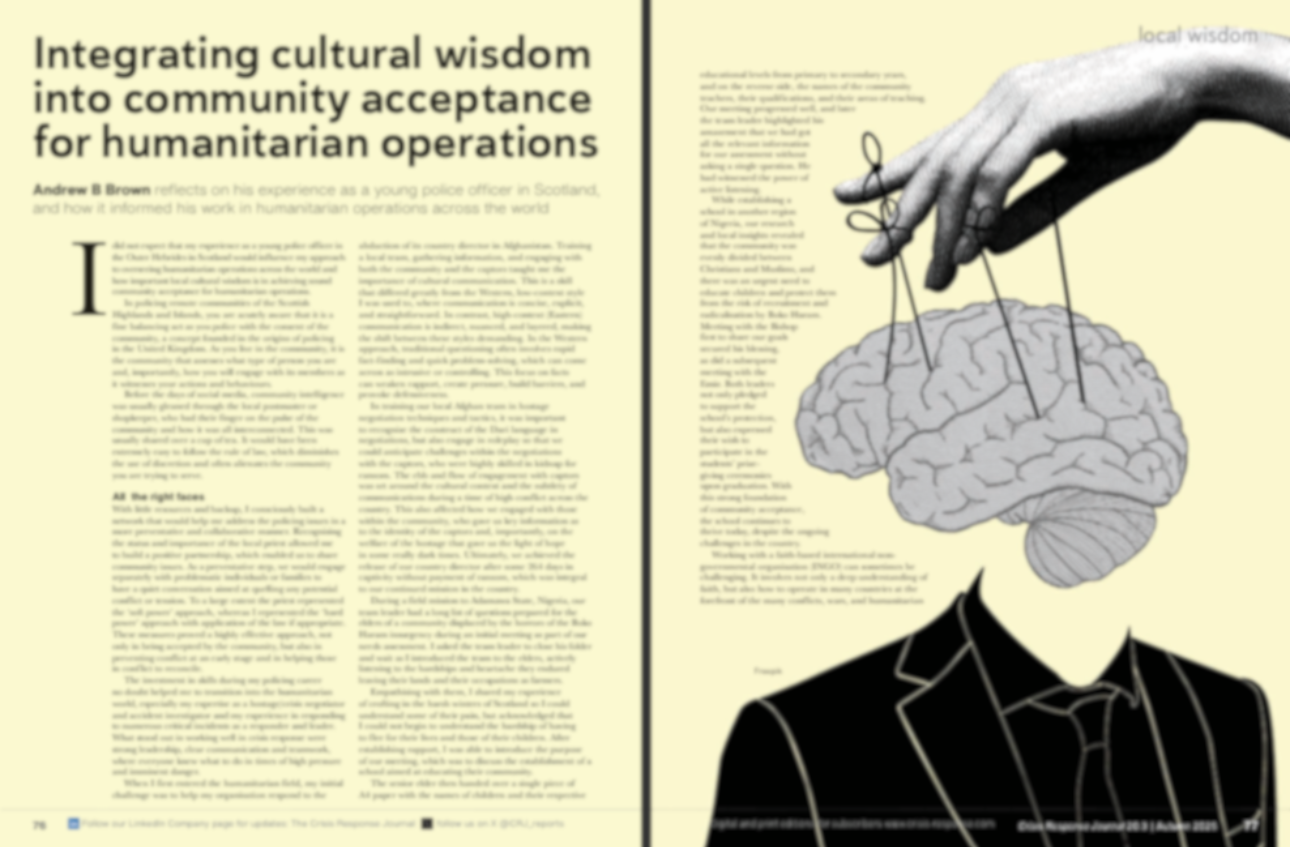
"Taking time to understand how a community ticks, who the key influencers are within the community and how to respect the wisdom that derives from your interaction with the community, are all vital in gaining that community acceptance and maintaining it," says Andrew B Brown (p 78)
Meanwhile, Richard FitzHugh argues that climate adaptation must move beyond buzzwords to real, measurable action. He adds: “A few hundred million years ago, a mummy dinosaur and a daddy dinosaur loved each other very much. One day, they had a baby dinosaur. Then, they all died and, over time, became oil. Fast forward to the 19th century, and this biochemical miracle sparked a global race to claim land rich in these reserves, extract them, and sell them to an industrialised world that would ultimately burn them.”
Andrew B Brown looks back on how his experience as a young police officer in the Outer Hebrides, Scotland, shaped his approach to safety and security plans for humanitarian operations, while Patrick Trancu explores the downfalls of scripted statements in crisis communication, using the Air India crash as a case study.
In the face of extreme weather events, Dayna Maressa Soares Pacheco Pamato and Elton Cesar Cunha highlight a model of municipal-level co-operation and co-ordination to improve disaster preparedness and civil defence in Santa Catarina, Brazil. On the other hand, Zainab Farooqui focuses on intangible heritage in Pakistan and Bangladesh and how it could guide climate adaptation against floods.
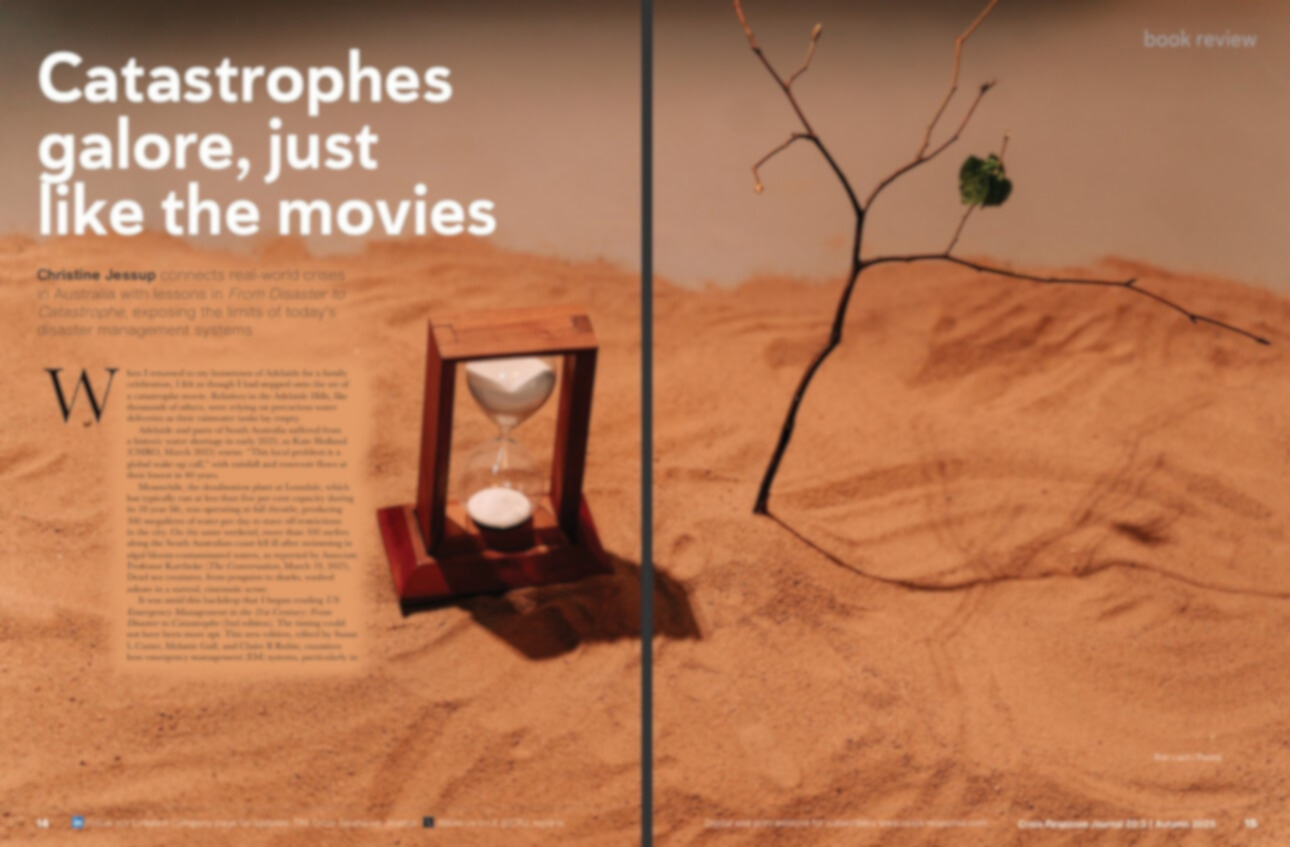
Christine Jessup's piece on p 14 reviews the book ‘US Emergency Management in the 21st Century: From Disaster to Catastrophe’
Frontline: Zainab Farooqui speaks to Derek Cheevers regarding his deployments in Poland after the Russian invasion of Ukraine and Türkiye after the 2023 earthquake.
Milipol Paris, the leading event for homeland security and safety, is returning on November 18–21, 2025, at the Paris-Nord Villepinte Exhibition Centre. Register for free at milipol.com
Christine Jessup draws parallels between the book ‘US Emergency Management in the 21st Century: From Disaster to Catastrophe’ and disaster management practices in Australia, which are struggling to keep up with the intensifying nature of disasters.
The Crisis Response Journal is available to subscribers only – we have a range of subscription rates to suit all needs. Click here for more details, or contact us at hello@crisis-response.com – we would love to hear from you!